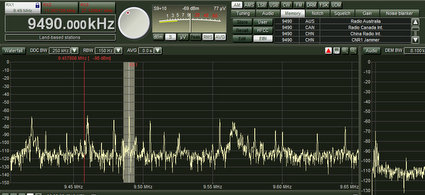SWLing in four easy steps
1 - Check UTC
Find out what time it is in World Time or Universal Time (UTC)
2 - Check Schedule
Check your shortwave broadcast schedule of choice and look up stations based on current UTC
- Go to the Shortwave Schedule site and click on the "Go" button under the heading "On air now."
- Open your copy of World Radio and TV Handbook.
The listing, whether online or in a book, will always give the following information:
- broadcasting station name
- days broadcasts are made
- the target geographic area (dedicated shortwave listeners don't care where the target geographic area is, by the way; they try to hear it anyway!)
- the broadcast content type
- broadcast frequencies (larger stations may easily broadcast on three frequencies at once)
3 - Turn On & Tune In
Turn on your radio and go to the best broadcast frequency based on the time of day. As a general rule of thumb, lower frequencies are better at nighttime, higher frequencies in daytime.
- On a digital radio, simply input the frequency on the radio keypad or tune up/down to the frequency. Every digital radio is different, so consult your owner's manual for instructions.
- On an analog radio, make sure you have the appropriate shortwave frequency band selected, then tune to the station frequency. Since analog dials are not as accurate as digital tuners, you may need to search a bit to find the broadcast you seek.
4 - Listen
Congratulations! Now you're SWLing!
After you've been tuning in to the world bands for a while, you'll get to know different broadcasters. Unlike your local news media, shortwave news travels with you. That's the glory of shortwave radio. It doesn't care about borders.
If you've found this guide helpful, please consider bookmarking the site and coming back in the future. I would love your feedback, especially if it helps make my guide easier to understand.



